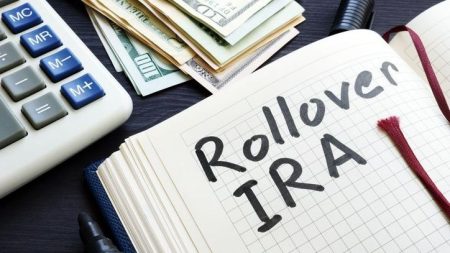Strategic planning and informed decision-making are key when it comes to how to maximize your retirement savings. By understanding the various retirement accounts available, taking advantage of employer-sponsored plans and consistently contributing to your savings, you can build a robust financial foundation for your future. Additionally, exploring tax-advantaged options and regularly reviewing your investment portfolio can significantly enhance your retirement savings, ensuring you achieve your long-term financial goals. A financial advisor can help you build a long-term retirement plan that works for your situation.
1. Start Saving Today
Beginning to save for retirement as early as possible gives your investments more time to grow. The power of compounding interest means that the sooner you start, the more your money can work for you. Even small contributions made regularly over a long period can accumulate to significant amounts.
All of which to say, regularly contributing to your retirement accounts can make a substantial difference over time. By setting aside a portion of your income each month, you can build a steady financial cushion for the future. Automated contributions can simplify this process, ensuring that saving becomes a seamless part of your financial routine.
2. Contribute to Tax-Advantaged Retirement Accounts
Tax-advantaged retirement accounts are powerful tools for maximizing retirement savings. These accounts, which include 401(k) plans and IRAs, offer significant tax benefits that can enhance the growth of your investments over time.
A traditional 401(k) plan, often offered by employers, allows you to invest a portion of your paycheck before taxes are taken out. This pre-tax contribution lowers your taxable income, which can reduce the amount of taxes you owe each year. Additionally, many employers offer matching contributions, which can significantly boost your retirement savings.
Individual retirement accounts (IRAs) are another option for tax-advantaged savings. Traditional IRAs provide tax-deferred growth, meaning you don’t pay taxes on your investments until you withdraw the money. Roth IRAs, on the other hand, are funded with after-tax dollars, but qualified withdrawals are tax-free. Choosing between a traditional and a Roth IRA depends on your current tax situation and future tax expectations.
The power of compound growth in tax-advantaged accounts should not be underestimated. By reinvesting your earnings, you can generate returns on both your initial contributions and any accumulated gains. Over time, this compounding effect can significantly increase the value of your retirement savings — especially when combined with the tax benefits these accounts offer.
3. Max Out Your Retirement Accounts

Maximizing your retirement contributions is a strategic move to secure financial stability in the future. Contributing the maximum allowable amounts not only boosts savings but also offers significant tax advantages.
For 2024, the contribution limit for 401(k) plans and similar workplace retirement accounts is $23,000. Savers who are aged 50 and older can add an extra $7,500 catch-up contribution. Meanwhile, the contribution limit for traditional and Roth IRAs is set at $7,000 as of 2024. For individuals 50 and up, the catch-up contribution remains at $1,000, allowing for a total contribution of $8,000.
4. Automate Your Savings
Automating your retirement savings both simplifies the process and ensures consistency. By setting up automatic contributions, you make saving a priority without having to think about it, which reduces the risk of forgetting to save or spending the money elsewhere.
Another benefit of automation is the ability to incrementally increase your contributions. Many retirement plans allow for automatic escalation, gradually raising your contribution rate each year. This can allow you to boost your retirement funds without ever feeling a sudden financial squeeze.
Lastly, automating your savings can lead to better financial discipline. By treating your retirement contributions as a fixed expense, you’re more likely to budget and spend wisely with the remaining income. This approach fosters a more structured and disciplined financial lifestyle, ultimately leading to a more comfortable retirement.
5. Diversify Your Investments
Diversifying your investments is crucial for retirement savings. Spreading your money across different asset classes, such as stocks, bonds and real estate, reduces the risk of losing a substantial portion of your savings due to market volatility.
Markets are unpredictable, and economic conditions can change rapidly. Diversification allows you to better adapt to these changes. If one sector or asset class underperforms, others in your diversified portfolio may perform well, helping to offset losses and protect your retirement savings.
Beyond stability, diversification also can offer the potential for steady growth over time. Each type of investment carries its own level of risk and potential return. By including a variety of investments in your portfolio, you can achieve a more balanced risk profile. High-risk investments, like stocks, may offer significant returns but can also experience sharp declines, while bonds and real estate typically provide more consistent, if modest, returns.
Further, a well-diversified portfolio is positioned to take advantage of growth opportunities across different sectors. Capturing gains in various markets and industries can enhance long-term growth potential, helping to maximize your retirement savings.
6. Take Advantage of Catch-Up Contributions
Catch-up contributions offer a valuable opportunity for individuals aged 50 and older to boost their retirement savings. These additional contributions allow older workers to invest more into their retirement accounts, compensating for any lost time or lower contributions made earlier in their careers. This provision is particularly beneficial for those who may have started saving late or experienced financial setbacks.
And soon, those ages 60 to 63 will be able to make an enhanced catch-up contribution. Starting in 2025, individuals within this age group can contribute an extra amount — significantly higher than the standard catch-up limits — to their retirement plans. The goal of this provision is to provide an additional saving boost during the final stretch before retirement, helping to ensure a more secure financial future.
Bottom Line

Maximizing retirement savings is a multifaceted process that involves planning strategically, making consistent contributions and leveraging tax-advantaged accounts. By starting early, automating savings and diversifying investments, individuals can build a robust financial foundation for the future. Additionally, taking advantage of employer-sponsored plans and catch-up contributions can significantly enhance retirement savings.
Tips for Retirement Planning
- Saving enough for retirement is just part of your retirement plan. A financial advisor can help you make sure you have a plan that matches your retirement goals and they can help you manage your investments to get there. Finding a financial advisor doesn’t have to be hard. SmartAsset’s free tool matches you with up to three vetted financial advisors who serve your area, and you can have a free introductory call with your advisor matches to decide which one you feel is right for you. If you’re ready to find an advisor who can help you achieve your financial goals, get started now.
- As you’re looking to better understand how much you may need to save for the retirement you want? Consider using a retirement calculator to get an estimate.
Photo credit: ©iStock.com/Rockaa, ©iStock.com/Daniel Tadevosyan, ©iStock.com/ArLawKa AungTun
Read the full article here
















